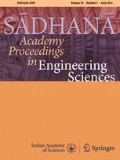Abstract
Mobile Ad hoc Network (MANET) nodes exchange information using the multi-hop wireless communications without the need for any pre-existing infrastructure. Routing protocols of MANET are designed with an assumption that the nodes will cooperate in routing process. To achieve high throughput and reliable communication, the nodes are expected to cooperate with each other. Routing protocol plays a crucial role in an effective communication between nodes and operates on the assumption that the nodes are fully cooperative. Due to the open structure and limited battery-based energy in MANET, some nodes may not cooperate correctly or behave maliciously and such kind of misbehavior impacts the fairness, reliability and efficiency in MANET. Previous work addressed the ways to overcome these kinds of node misbehaviors and attacks. Most of the existing works need time to analyse the neighbor traffic and decide whether a neighbor is behaving maliciously or not. Further, the existing credit-based detection mechanisms may mark a genuine idle node as a malicious node. This work addresses a simple Neighbor Credit Value based AODV (NCV-AODV) routing algorithm for the detection of selfish behavior which avoids such false detection. The proposed idea is implemented in Ad hoc On Demand Distance Vector (AODV) routing protocol and an extensive analysis on the performance of the proposed detection mechanism against the selfish behavior of some MANET nodes are conducted.






Similar content being viewed by others
References
Praveen Joshi 2011 Security issues in routing protocols in MANETs at network layer. Procedia Computer Science. 3: 954–960
Ryu B G, Choi J H and Lee S 2013 Impact of node distance on selfish replica allocation in a mobile ad-hoc network. Ad Hoc Network 11(8): 2187–2202
Marti S, Giuli T, Lai K and Baker M 2000 Mitigating routing misbehavior in mobile ad hoc networks. Mobile Computing and Networking. 255–265
Buchegger S and Boudec J Y L 2002 Performance Analysis of the CONFIDENT PROTOCOL: Coperation of Nodes- Fairness in Distributed Ad-Hoc Networks. In: IEEE/ACM Workshop on Mobile Ad Hoc Networking and Computing(MobiHOC), Lausanne
Buttayan L and Hubaux J P 2003 Stimulating Cooperation in Self-Organizing Mobile Ad Hoc Networks. ACM/Kluwer Mobile Networks and Applications, vol. 8, pp. 579–592
Hales D 2004 From Selfish Nodes to Cooperative Networks – Emergent Link-based Incentives in Peer-to-Peer Networks. In: IEEE International Conference on Peer-to-Peer Computing. pp. 151158
Rebahi Y, Mujica V and Sisalem D 2005 A Reputation-Based Trust Mechanism for Ad hoc Networks. In: 10th IEEE Symposium on Computers and Communications. pp. 37–42
Mahajan R, Rodrig M, Wetherall D and Zahorjan J 2005 Sustaining cooperation in multi-hop wireless networks. NSDI.
Jeba kumar M, Kathirvel A, Kirubakaran N, Sivaraman P and Subramaniam M 2015 A unified approach for detecting and eliminating selfish nodes in MANETs using TBUT. EURASIP Journal on Wireless Communications and Networking, vol. 2015, pp.143
Buttayan L, and Hubaux J P 2000 Enforcing service availability in mobile ad-hoc WANs. In: Proceedings of IEEE/ACM Workshop on Mobile Ad Hoc Networking and Computing MobiHoc. Boston
Zhong S, Chen J and Yang Y R 2003 Sprite: A simple, cheat proof credit based system for mobile ad hoc networks. In: Proceedings of IEEE INFOCOM, San Francisco, CA, United States. pp. 1987–1997
Varshney U 2008 Improving Wireless Health Monitoring Using incentive Based Router Cooperation. IEEE Computer Society. 41(5): 56–62
Crocraft J, Gibbens R, Kelly F and Ostring S 2004 Modeling Incentives for collaboration in mobile ad hoc networks. Performance Evaluation 57(4): 427–439
Anderegg L and Eidenbenz S 2003 Ad hoc-VCG: A truthful and cost-efficient routing protocol for mobile ad hoc networks with selfish agents. In: 9th International Conference Mobile Computing and Networking, San Diego, CA. pp. 245–259
Buttyan L, Dora L, Félegyhazi M and Vajda I 2007 Barter-based cooperation in delay tolerant personal wireless networks. In: IEEE Workshop on Autonomic and Opportunistic Communications, AOC.
Yanchao Z, Wenjing L, Wei L and Yuguang F 2007 A secure incentive protocol for mobile ad hoc networks. Wireless Networks (WINET) 13(5): 569–582
Haojin Z, Xiaodong L, Rongxing L, Yanfei F and Xuemin 2009 SMART: A Secure Multilayer Credit-Based Incentive Scheme for Delay-Tolerant Networks. IEEE Transactions on Vehicular Technology 58(8): 4628–4639
Honghuing L, Patrick P C, Lee, John C S and Lui 2013 On the credit evolution of credit-based incentive protocols in wireless mesh networks. Journal of Computer Networks. 57: 3327–3343
Younghwan Y, Sanghyun A and Agarwal D P 2005 A credit-payment scheme for packet forwarding fairness in mobile ad hoc networks. In: IEEE International Conference on Communications. vol. no. 5, pp. 3005–3009
Author information
Authors and Affiliations
Corresponding author
Rights and permissions
About this article
Cite this article
Rama Abirami, K., Sumithra, M.G. Preventing the impact of selfish behavior under MANET using Neighbor Credit Value based AODV routing algorithm. Sādhanā 43, 60 (2018). https://doi.org/10.1007/s12046-018-0803-4
Received:
Revised:
Accepted:
Published:
DOI: https://doi.org/10.1007/s12046-018-0803-4




